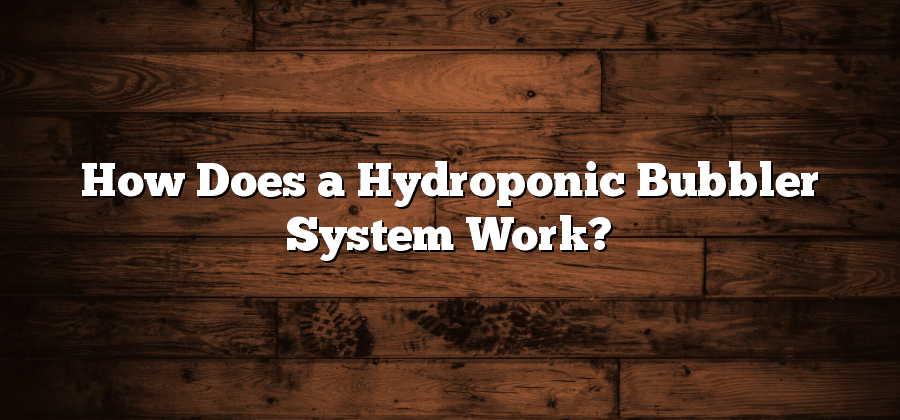Reservoir: The water-filled container that holds the nutrient solution.
One of the essential components of any hydroponic system is the reservoir. This water-filled container serves as the home for the nutrient solution that nourishes the plants. The reservoir acts as a central hub, providing a consistent supply of water and nutrients to the plant roots. It plays a vital role in the overall success of the hydroponic setup.
The reservoir should be carefully chosen, taking into consideration factors such as size, material, and durability. It should be large enough to hold an adequate amount of water to sustain the plants’ needs but not so large that it becomes difficult to manage. Materials like food-grade plastic or fiberglass are often preferred due to their resistance to corrosion and their non-reactive nature with the nutrient solution. The durability of the reservoir is crucial to ensure it can withstand the weight of the water and any potential external stressors. A well-maintained reservoir will provide a stable environment for the plants, ensuring they receive the necessary nutrients and hydration for optimal growth.
Air Pump: A device that continuously pumps air into the reservoir.
Air pumps are an essential component of any hydroponic system. These devices work tirelessly to continuously supply air to the nutrient solution in the reservoir. By doing so, the air pump enhances the oxygen levels in the water, promoting healthy root development and overall plant growth.
The functioning of an air pump is rather straightforward. It consists of a motor that powers a piston or diaphragm, creating a steady stream of air. This air is then pumped into the reservoir through a connected air stone or diffuser. The tiny bubbles released by the air stone help to oxygenate the nutrient solution, preventing it from stagnating and becoming devoid of oxygen. Without the continuous supply of air, the roots would suffocate and die, leading to the demise of the entire plant. Thus, the air pump plays a crucial role in creating an optimal environment for the plants to thrive in a hydroponic system.
Air Stone: A porous stone or diffuser that releases tiny bubbles into the nutrient solution.
An integral component of a hydroponic system, the air stone plays a crucial role in delivering oxygen to the nutrient solution. Composed of a porous material, such as stone or diffuser, it releases a stream of tiny bubbles into the solution. These bubbles increase the surface area of the solution and promote the diffusion of oxygen, thus ensuring that the plants receive a continuous supply of this essential gas. The increased oxygen levels not only keep the roots healthy and well-aerated but also enhance nutrient uptake, leading to robust plant growth.
The size and design of the air stone are important considerations. Depending on the scale of the hydroponic system, the air stone should be selected accordingly to ensure optimal aeration. It is recommended to choose smaller air stones for smaller reservoirs and larger ones for larger reservoirs. Additionally, a uniform distribution of bubbles throughout the solution can be achieved by placing multiple air stones strategically or utilizing a diffuser with multiple outlets. In any case, it is crucial to clean and replace the air stone periodically to prevent clogging and maintain its efficiency.
Nutrient Solution: A mixture of water and essential nutrients that is supplied to the plants.
The nutrient solution is a vital component in hydroponic systems as it provides plants with all the essential elements they need for optimal growth. Consisting of a mixture of water and a carefully balanced combination of nutrients, this solution acts as a substitute for soil, delivering necessary substances directly to the plant’s root system. By eliminating the need for soil, hydroponics allows for precise control over nutrient levels, ensuring plants receive the exact amount of each element they require.
The composition of the nutrient solution varies depending on the specific needs of different plant species and growth stages. The solution typically contains primary nutrients such as nitrogen (N), phosphorus (P), and potassium (K), which are essential for overall plant health and development. In addition to these primary nutrients, secondary nutrients, including calcium (Ca), magnesium (Mg), and sulfur (S), are also included to promote strong structural development. Furthermore, the nutrient solution may include micronutrients such as iron (Fe), manganese (Mn), zinc (Zn), copper (Cu), and boron (B) in order to fulfill more specific trace element requirements. Through regular monitoring and adjustment of the nutrient solution, hydroponic growers can ensure that plants receive all the necessary elements to thrive and reach their full potential.






